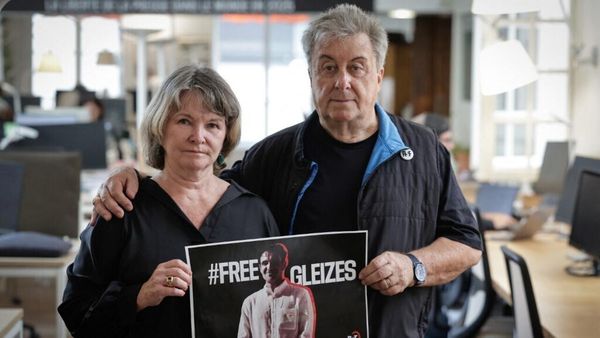
The federal government is considering whether Australia should follow the European Union and impose tariffs on some imports from nations with less ambitious climate goals.
The climate change and energy minister, Chris Bowen, said his department would begin two rounds of consultation on whether Australia should adopt a so-called cross-border adjustment mechanism (CBAM) to avoid disadvantaging domestic companies. Steel and cement would be the first two products to be considered.
“We know of the potential for production to shift from countries with more ambitious emissions-reduction policies to those with lower emission-reduction policies, and potentially resulting in increased global emissions,” Bowen told a meeting of the Australian Business Economists in Sydney. “[This] undermines national and international climate action and has long been a key consideration in the development of climate policy across the world.”
The EU will implement its own CBAM from 2026. Bowen said he wants a final report prepared with the help of academics by the third quarter of 2024 as to whether Australia should implement a similar policy or take other steps.
“Everybody understands, including in my discussions with industry, that this is a big and complicated process which can’t be rushed,” Bowen told Guardian Australia after his speech. “The EU gives us a model, and we’ll look at it closely in the Australia context.”
The government’s legislated safeguard mechanism to reduce the carbon emissions from the 200-odd largest industrial emitters began taking effect from 1 July. Industries such as steel and aluminium will have some protection if they are deemed “trade-exposed” to competitors that don’t face similar carbon constraints.
Still, the government is keen to ensure other protections are in place to avoid undermining local producers’ competitiveness. Bowen added that border limits such as a CBAM may serve other industrial goals.
“It’s a potentially important mechanism to ensure domestic sovereign capability and supply,” he said.
“One of the biggest challenges we face is supply-chain crunches and any measure which helps us deal with that is a positive thing for the transition [off fossil fuels],” he said, adding that any mechanism would have to be “sensibly designed” to limit any impact on costs.
Bowen said it was important that Australia’s biggest emitters did their “fair share”, with the safeguard changes cutting more than 200m tonnes of greenhouse gas emissions by 2030.
“Importantly, 80% of safeguard companies, and 86% of covered emissions, are covered by corporate net zero commitments,” he said.
The EU’s CBAM will initially apply to imports in five emissions-intensive sectors deemed at greater risk of transferring emissions offshore: cement, iron and steel, aluminium, fertilisers and electricity.
The government review look at these industries and policy options to address them, including a CBAM for steel and cement.
“The team will engage with key stakeholders including industry, peak business groups, experts and researchers, commonwealth and state and territory government agencies, international trading partners, relevant international bodies and the broader community,” Bowen said.
Detailed design of any agreed policy options would be taken into account in the government’s Net Zero 2050 plan.
Key issues for consideration would be the measurement of emissions embedded in traded goods, carbon costs in countries of origin, how to adapt to policy changes over time and nature of obligations on importers and exporters, he said in his speech.
Australia would also need to consider its trading relationships, consistency with international trade rules and interoperability with other schemes such as the EU.







